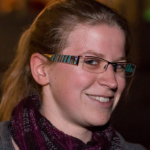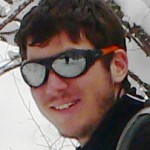Seminar : Ultrafast Magnetization Manipulation in Multisublattice Magnets (November 27th, 2017)

On December 4, we have the pleasure to welcome Marwan Deb from Université de Lorraine, France. At 11H, he will give a seminar on “Ultrafast Magnetization Manipulation in Multisublattice Magnets” in room 434A. Femtomagnetism is a relatively new and rapidly growing area of research that focuses on the ultrafast magnetization dynamics driven by fs laser […]
Read moreEnhanced annealing stability and perpendicular magnetic anisotropy in perpendicular magnetic tunnel junctions using W layer (November 15th, 2017)

The stiffening of the perpendicular magnetic tunnel junction (pMTJ) stack resulting from the W insertion due to its very high melting temperature, is the key mechanism behind the extremely high thermal robustness. Thicker W layer in the W(t)/Ta 1 nm cap layer makes the storage electrode of pMTJ stack highly robust against annealing up to […]
Read morePhD thesis defense : Elaboration and characterization of magnetic systems for skyrmion observations (November 15th, 2017)

On Thursday, the 07th Of December 2017 at 14h00, Chloé BOUARD from DRF/INAC/SPINTEC, will defend her PhD thesis entitled “Elaboration and characterization of magnetic systems for skyrmion observations” Place : Amphitheater from CNRS building A-3rd floor – 25 rue des Martyrs, Grenoble New technology needs huge storage capacity together with high speed and low-cost transport […]
Read moreSeminar : Mutual synchronization of spin torque nano-oscillators through a long-range and tunable electrical coupling scheme (November 14th, 2017)

On November, 20, we have the pleasure to welcome Romain Lebrun from University Johannes Gutenberg, Mainz, Germany. At 11H, room 434 A, he will present give a talk on “Mutual synchronization of spin torque nano-oscillators through a long-range and tunable electrical coupling scheme”. The concept of spin-torque-driven high-frequency magnetization dynamics, allows the potential construction of […]
Read moreSeminar : Recent progress in experimental graphene and topological spintronics (November 14th, 2017)

On November, 22, we will have the pleasure to welcome Frédéric BONNEL from Catalan Institute of Nanoscience and Nanotechnology (ICN2) in Spintec. At 11H, we will give a seminar on “Recent progress in experimental graphene and topological spintronics” The recent emergence of 2-dimensional materials and topological matter has opened new prospects for spintronics technologies [1]. […]
Read moreSKYLOGIC – An ANR project (November 09th, 2017)

The recent discovery of nanometer-size whirling magnetic structures named magnetic skyrmions has opened a new path to manipulate magnetization at the nanoscale. Magnetic skyrmions are characterized by a chiral and topologically non-trivial spin structure, i.e their magnetization texture cannot be continuously transformed into the uniform magnetic state without causing a singularity. Skyrmions can also be […]
Read morePhD thesis defense : Spin accumulation effects and magnetoresistance effects in lateral nanostructures (November 08th, 2017)

On Wednesday, the 15th Of November 2017 at 10h00, Gilles ZAHND from DRF/INAC/SPINTEC, will defend his PhD thesis entitled “Spin accumulation effects and magnetoresistance effects in lateral nanostructures” Place : Amphitheater from CNRS building A-3rd floor – 25 rue des Martyrs, Grenoble Spintronics is mainly based on the phenomenon of spin accumulation, which is inherent […]
Read morePhD thesis defense : Spin injection, transmission and detection in antiferromagnets (October 31st, 2017)

On Tuesday, the 14th Of November 2017 at 13h30, Lamprini FRANGOU from DRF/INAC/SPINTEC, will defend her PhD thesis entitled “Spin injection, transmission and detection in antiferromagnets” Place : Minatec, 3 parvis Louis Néel Grenoble, amphitheater Palladium 2 Antiferromagnetic spintronics is an emerging research field in the area of information technology that exploits the unique combination […]
Read more[POSITION FILLED] 24 months post-doctoral position : “Magnetically actuated nanoparticles for targeted cancer therapy” (October 24th, 2017)

The SPINTEC and SyMMES labs offer a 24 months post-doctoral position, starting in early 2018, on the design of magnetically actuated nanoparticles (NPs) for targeted cancer therapy. This work is part of the Nanoviber EuroNanomed2 project, with the general goal of achieving preclinical validation and toxicology assessment of these particles. Based on previous results obtained […]
Read morePhD thesis defense : Electric field control of magnetic properties of Pt/Co/AlOx system (October 24th, 2017)
![]()
On Thursday, the 26th Of October 2017 at 14h00, Marine SCHOTT from UGA/Neel Institute, will defend her PhD thesis entitled “Electric field control of magnetic properties of Pt/Co/AlOx system” Place : Amphithéâtre du CNRS / building A – 3rd floor – 25 rue des Martyrs, Grenoble During my PhD, we chose to study the particular […]
Read more



